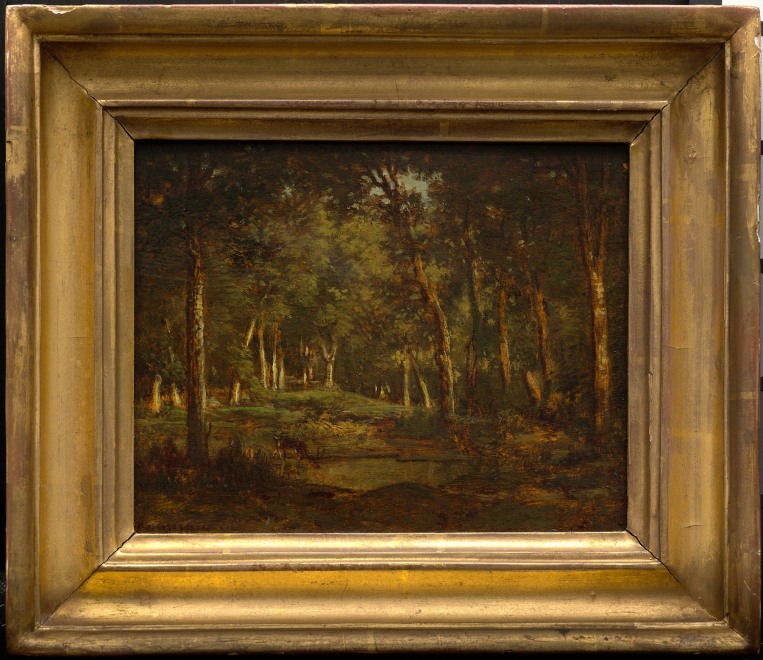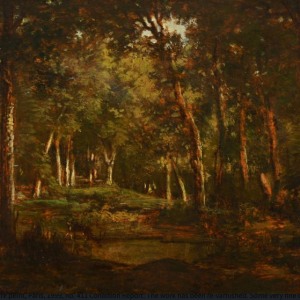Provenance
Maurice Kann, Paris
Boussod, Valadon & cie, Paris, 30 November 1893, no. 23235 (acquired from the above)
Samuel Putnam Avery, New York, April, 1897 (acquired from the above)
Richard Feigen, New York
Literature
M. Schulman, Théodore Rousseau, Catalogue raisonné de l'œuvre peint, vol. II, Paris, 1999, no. 411, p. 238.
Catalogue note
Painted circa 1848–50, The Doe Pond reveals Théodore Rousseau’s ability to distill the quiet poetry of the forest into a concentrated, intimate scene. The composition draws the viewer’s gaze into a shaded glade where dappled sunlight filters through a dense canopy, dissolving into reflections along the still surface of a pond. At the water’s edge, a solitary deer lowers its head to drink, embodying the gentle, unguarded life of the woodland. Rousseau’s choice of a small, beveled panel heightens the immediacy of the work, offering a glimpse into a private corner of nature rather than a sweeping panorama.
By the late 1840s, Rousseau had already established himself as a central figure of the Barbizon school, known for rejecting academic conventions in favor of direct engagement with the landscape. Here, his palette of deep greens, warm browns, and amber-gold light suggests both the fullness of summer foliage and the first hints of seasonal change. Brushwork alternates between fine, calligraphic strokes to define slender birch trunks and broader, more textured passages for dense undergrowth, conveying both botanical precision and painterly freedom.
The present work once formed part of the collection of Maurice Kann (1839–1905), a celebrated German–Jewish art patron in Paris, whose discerning eye for nineteenth-century painting brought him into contact with the leading dealers of the age. It later passed through the hands of Boussod, Valadon & Cie—successors to the house of Goupil—before entering the collection of Samuel Putnam Avery (1822–1904), a pioneering New York art dealer and advocate for French painting in America. In its layered history, The Doe Pond carries both the intimacy of Rousseau’s vision and the cosmopolitan journey of his art, bridging the secluded forest clearings of Fontainebleau and the salons of Paris and New York.
This note was written by Elsa Dikkes.




